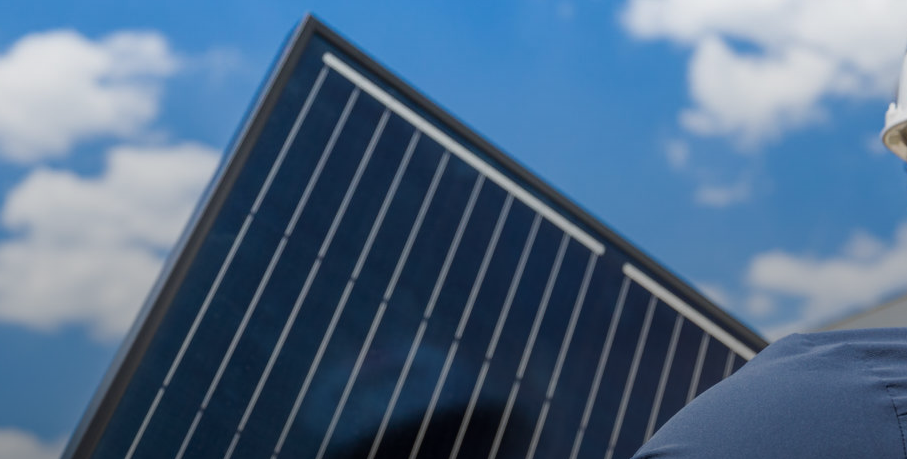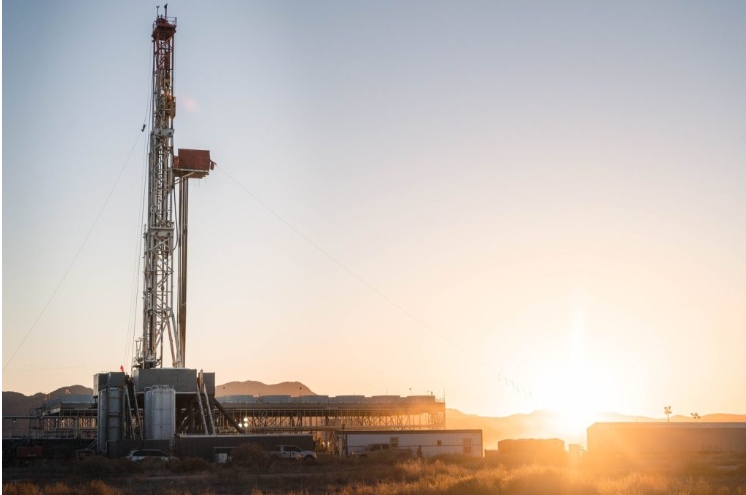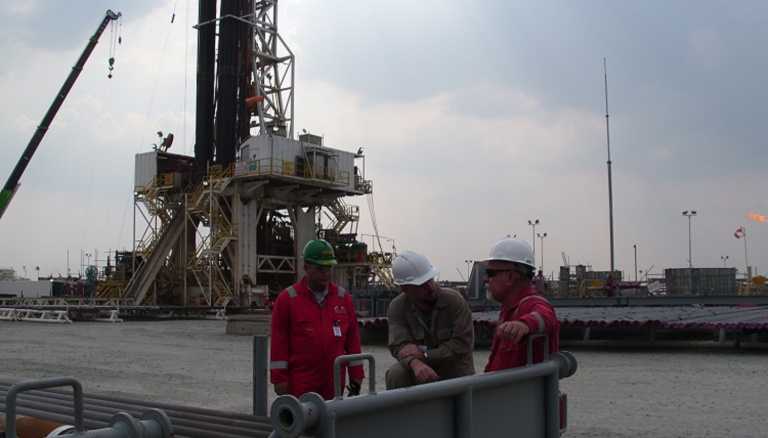
Secure Solar Futures president Tony Smith barely paused to celebrate last week’s David vs. Goliath victory for small-scale commercial projects.
The bustling but tiny solar operation he founded just couldn’t spare the time for a party.
Still, he’s jubilant utility regulators put the kibosh on Dominion Energy’s attempt to saddle rooftop installations with astronomical grid interconnection fees that was stifling the industry’s gains across an expansive swath of Virginia.
“We were joyful,” Smith said about the injunction the State Corporation Commission (SCC) delivered on Aug. 30. “Then, upon saying ‘Wow!’ for 15 minutes, we got back to work.”
After all, his Staunton-based company needed to redirect its attention to advancing two stalled rooftop installations in Prince William County. The threat of unexpected expenses from Dominion meant projects at Freedom High School and Potomac Shores Middle School — roughly 1 megawatt apiece — had been in limbo for eight-plus months.
Secure Solar Futures was far from alone.
Companies across Dominion’s service territory were also reassessing projects they had paused after the investor-owned utility rolled out new and expensive interconnection parameters last December for non-residential, net-metered solar projects.
Dominion’s surprise rules — announced more than two years after a major Virginia law bolstered solar — could have boosted the price tag of each school project by at least $1 million, Smith estimated.
“This hits Virginia right in the groin,” Smith said. “It wasn’t isolated and it created havoc.”
Regulators had not vetted the new requirements, which spelled out how solar companies would be on the hook to pay to upgrade substations, cables and other hardware, as well as cover the cost of a series of studies to guarantee the new projects met safety and reliability requirements.
Also, solar array recipients would be required to pay a monthly fee to Dominion to cover maintenance. Not only that, but the utility wanted solar customers to sign what it called a “small generator interconnection agreement” so it was clear they would be the ones held liable if their array caused a grid failure.
“We heard war stories from other solar companies who were throwing up their hands and saying they would have to back out of Dominion territory because it was a deal-stopper,” Smith said.
Handfuls of complaints weren’t confined to Northern Virginia, where the two Prince William County schools are. For instance, a solar array on a grocery store in the Hampton Roads region was put on hold. And near Richmond, Henrico County officials slowed plans for a 686-kilowatt array at the James River Juvenile Detention Center.
Those setbacks prompted Smith and others to reinvigorate the Virginia Distributed Solar Alliance. A decade ago, the group — spearheaded by Secure Solar Futures — had successfully strategized a legislative path forward for solar power purchase agreements. It’s a mix of solar installers, and advocacy organizations such as the Sierra Club of Virginia and Solar United Neighbors of Virginia.
“One of the virtues of being a network of players joined by a set of shared values and aspirations is that we could be extremely nimble,” Smith said. “We didn’t have to go through hierarchies.”
This time around, the alliance needed to convince regulators to order Dominion to back down on costly interconnection demands.
“We realized what Dominion was doing was unprecedented and harmful,” Smith said. “And it was illegal.”
It started with a letter
The alliance, with Smith at the helm, started its conversation with Dominion via an April letter to CEO Bob Blue. It laid out roughly a dozen projects close to 1 MW in size that would be deep-sixed due to the time and money consumed by the parameters.
Within a week, Blue responded, telling the alliance that Dominion wasn’t budging, saying that the safety of customers and employees, and the reliability of the grid were paramount.
Eventually, alliance members concluded that utility regulators needed to hear their case. On June 1, they filed their first-ever petition with the SCC, calling on guidance from Cliona Robb, an energy attorney for 23 years.
Robb, a partner at Richmond-based Thompson McMullan, serves as legal counsel for the alliance.
The alliance’s June petition stated that Dominion’s interconnection parameters were illegal because they were never approved by regulators. It asked commissioners to rule on net metering projects between 250 kW and 1 MW.
“We narrowly cast our petition because these are the kinds of projects that have always been net-metered without any issues around safety and reliability,” Smith said.
Briefly, net metering is a billing mechanism that credits solar energy system owners for the electricity they add to the grid.
For years, net-metering models, which use power purchase agreements, have appealed to universities, public schools, hospitals, churches, municipalities and small commercial ventures because they are low-risk. They lock in an affordable kilowatt-hour price of electricity, the installer covers upfront costs and maintains the arrays for their 25- to 30-year lifespan, and the recipients can achieve sustainability goals.
Those entities can least afford to finance, much less build and operate solar, Smith said, adding that school arrays are often incorporated into hands-on lessons about renewable energy for students.
He noted that no net metering projects in Dominion’s service area exceed 1 MW, even though the Clean Economy Act of 2020 bumped that cap up to 3 MW for the state’s two investor-owned utilities. In Appalachian Power territory, just one net metered project is bigger than 1 MW, at roughly 1.5 MW, according to state records.
Smith and the alliance were encouraged in late July when SCC hearing examiner Mary Beth Adams recommended that Dominion’s interconnection rules be suspended until the commission resolved the interconnection-related issues raised in two other separate cases.
Adams referred to a section of Virginia code focusing on interconnection, stating that Dominion is bound to provide power distribution service that is “just, reasonable, and not unduly discriminatory to suppliers of electric energy, including distributed generation.”
She also said that Dominion lacks the authority to require net-metering customers to execute a small generator interconnection agreement.
All about safety and reliability
Decisions by hearing examiners are non-binding. However, within a month, commissioners concurred with Adams’ conclusions in a five-page order. The injunction prevents Dominion from forcing solar companies and their customers to comply with the interconnection parameters and small generator interconnection agreements.
They noted that the suspensions are effective until commissioners have investigated and completed rulemaking on two separate cases dealing with interconnection issues.
Commissioners also made it clear that they have “neither disregarded, nor taken lightly, Dominion’s claims regarding safety and reliability.”
“Dominion should continue to take the actions necessary to maintain the immediate safety and reliability of its system,” the commissioners wrote. “This may include, but need not be limited to, seeking specific authority from this Commission in one or more formal proceedings.”
Utility spokesperson Jeremy Slayton stuck to that two-word mantra when asked to comment on the commission’s injunction.
“Our filings and interconnection requirements are designed to ensure the same safety and reliability standard regardless of who builds the project,” Slayton said. “We believe this to be critical to maintaining a reliable energy grid.”
Alliance members maintain that neither safety nor reliability is being compromised with current commercial solar net metering. They claim the unnecessary parameters add at least 40% to project costs.
For instance, one rule required the use of an advanced form of cabling, also called dark fiber, which costs $150,000 to $250,000 per mile. Another piece of hardware, a distributed generation relay panel, runs $250,000.
In addition, solar companies said they would have to spend between $200,000 and $1.2 million per project on engineering and construction costs to be sure all the pieces were operating efficiently.
Smith and Robb are no strangers to tangles with Dominion. They bumped into similar interconnection issues two years ago when trying to site a 1.2-megawatt community solar project for low-income residents on 10 acres in Augusta County. Issues with that project still have not been resolved, Smith said.
He’s relieved the commission’s ruling puts the pair of Prince William school projects back on sound economic footing.
“The biggest unknown was not knowing how long all of this would take,” Smith said about the timeline of the Dominion challenge. “We had already put in a lot of money upfront with the engineering and ordering the panels.”
As it stands now, he’s relieved both installations will go online — but in 2024 rather than later this year.
The solar trailblazer is also reassured that the commission’s ruling will quash other utilities’ pursuit of add-on interconnection fees.
“Our fear was, if we lost, Appalachian Power and co-ops in Virginia would take a cue from Dominion and impose similar restrictions,” he said. “Dominion may have underestimated our willingness and capacity to take this to the mat with them”
Indeed. That relentlessness prompted the trailblazing solar developer to draw upon the sentiments of noted author and cultural anthropologist Margaret Mead.
“‘Never doubt that a small group of thoughtful committed individuals can change the world,’” Smith said, reciting Mead’s notable words from memory. “In fact, it’s the only thing that ever has.”







